Abstract
Calcium is an important factor in the ability of plants to resist salt stress, possibly because of its role in maintaining membrane integrity. We studied the effects of NaCl stress on membrane-associated Ca in corn root protoplasts (Zea mays L. cv Pioneer 3377) using the fluorescent Ca probe chlorotetracycline (CTC). Protoplasts were isolated from the cortex of primary roots of corn seedlings (Gronwald and Leonard, Plant Physiol 1982 70: 1391-1395). After a 30 minute incubation in 50 micromolar CTC, the protoplasts were exposed to isosmotic treatment solutions containing various concentrations of NaCl just before fluorimetric analysis. Increasing NaCl concentrations caused a progressive reduction in net CTC fluorescence, to 50% of control values at 150 mm NaCl. NaCl did not displace CTC from the cells, nor did it directly interfere with Ca-CTC binding. Tests with CsCl, RbCl, KCl, LiCl, Na2SO4, NaNO3, and NaBr indicated that the reduction in CTC fluorescence was not specific to either Na or Cl, but may have been due to increased ionic strength of the treatment solutions. Like CTC fluorescence, root growth of intact corn seedlings was not specifically sensitive to Na, but was inhibited by several monovalent cations in the order Li > Cs ≫ Rb > Na > K. CTC fluorescence at 100 mm NaCl was restored to unstressed levels by increasing Ca concentrations. Since our salt treatments were isosmotic, we conclude that the ionic component of salt stress displaces Ca from membranes of corn root cells.
Full text
PDF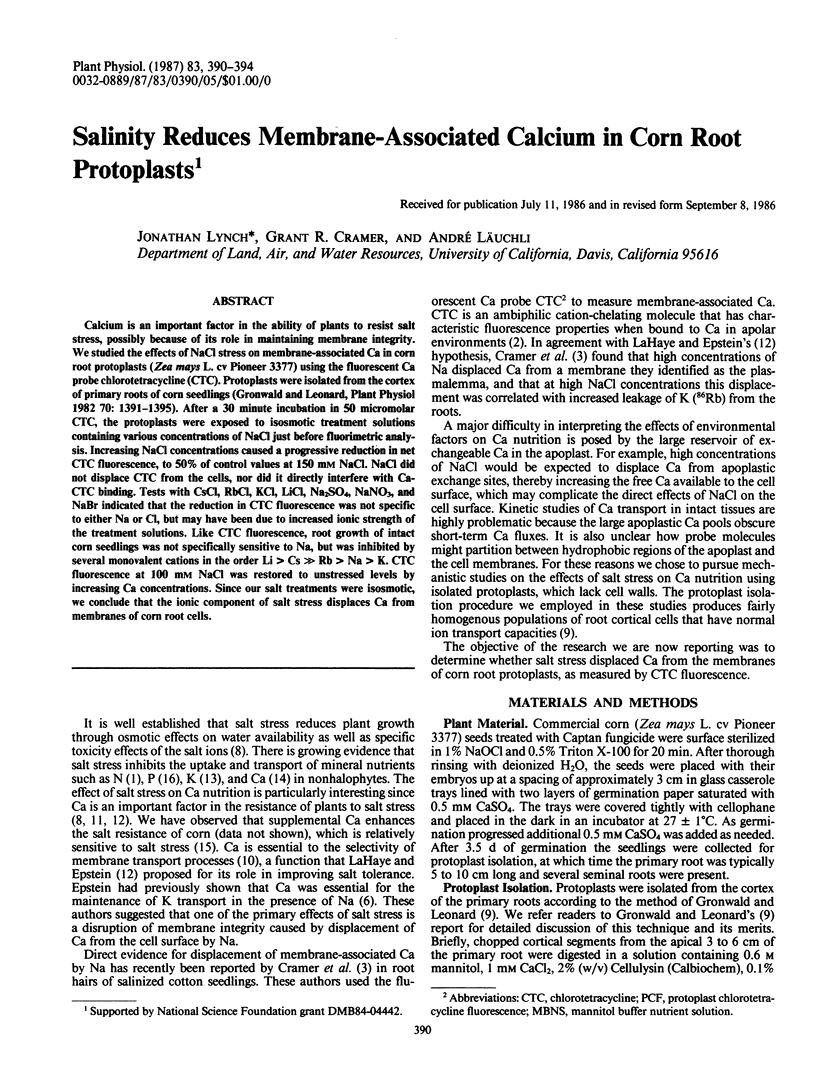
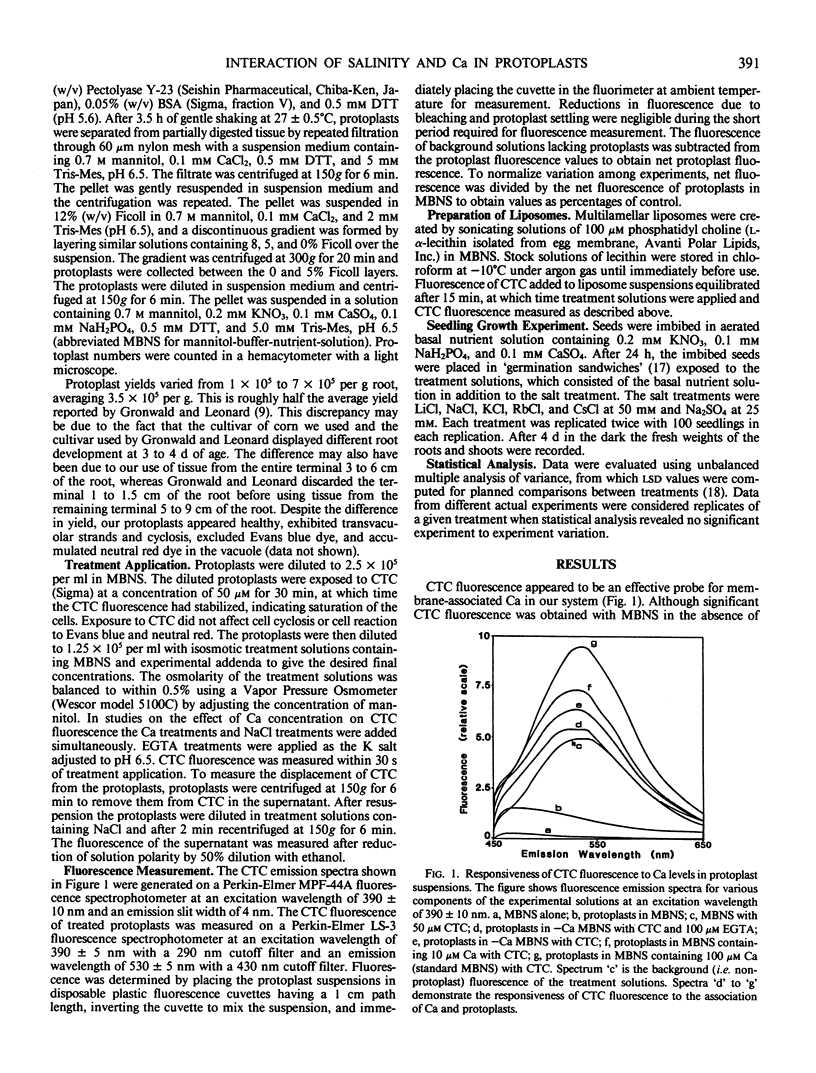
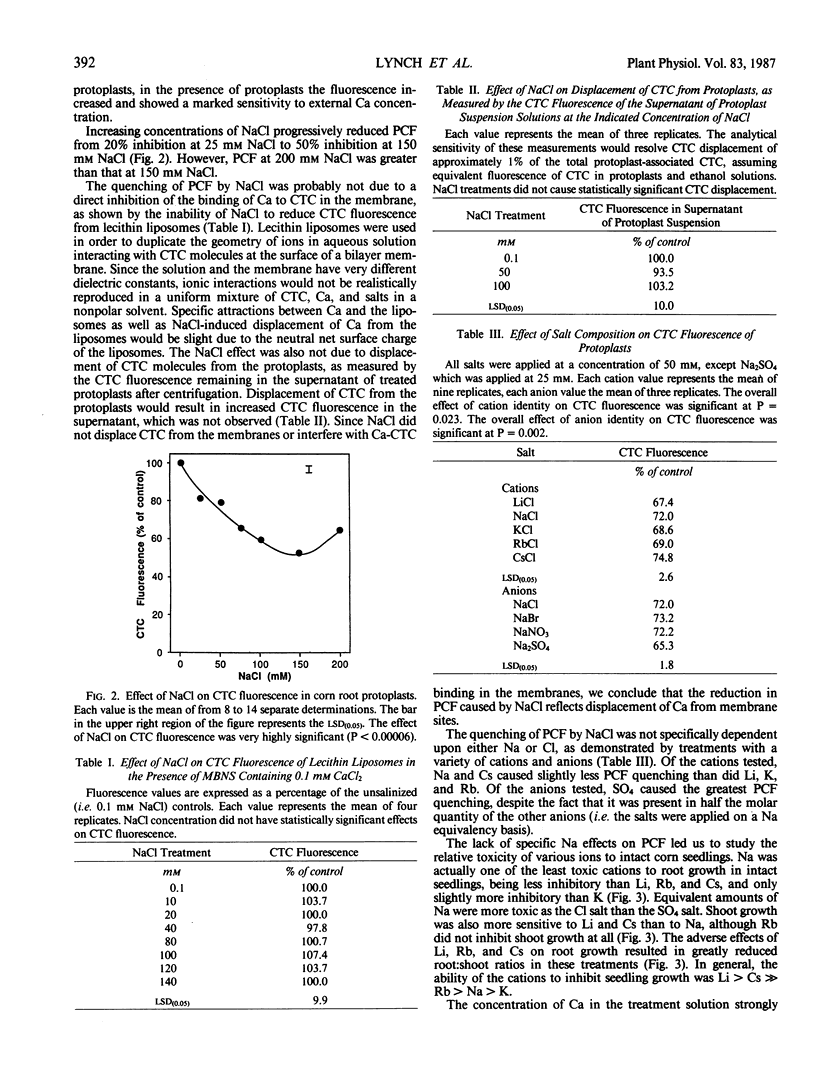
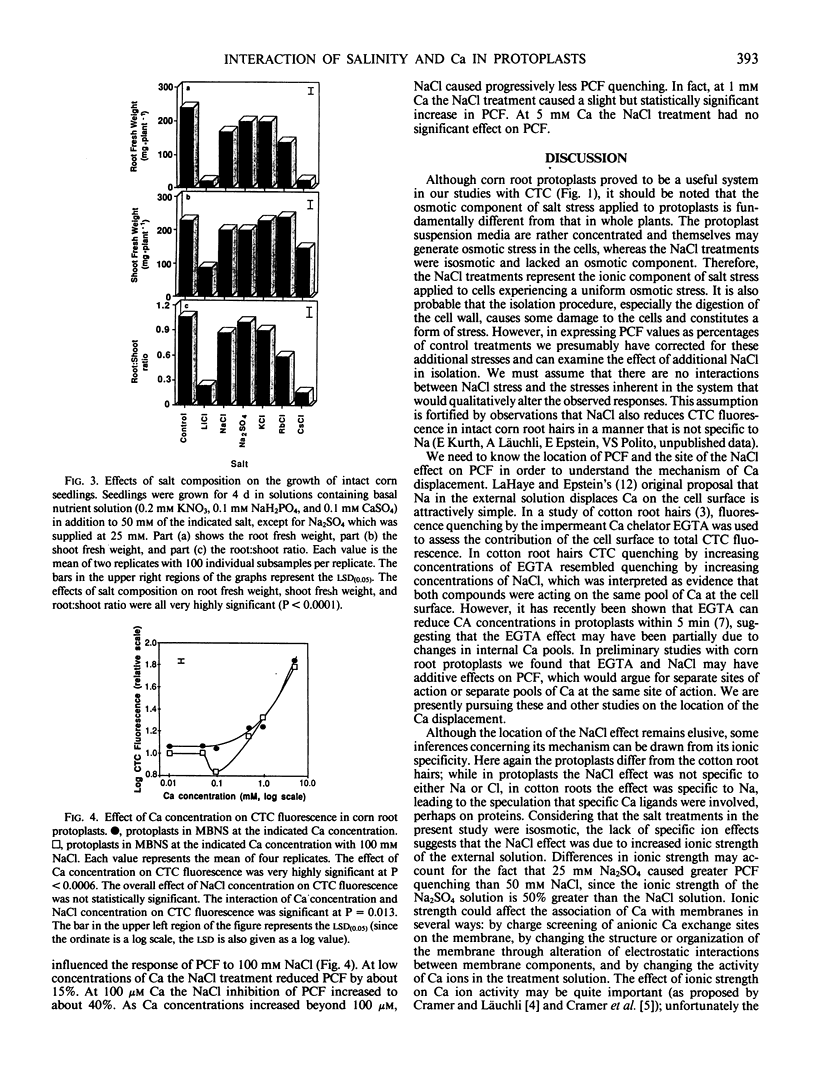
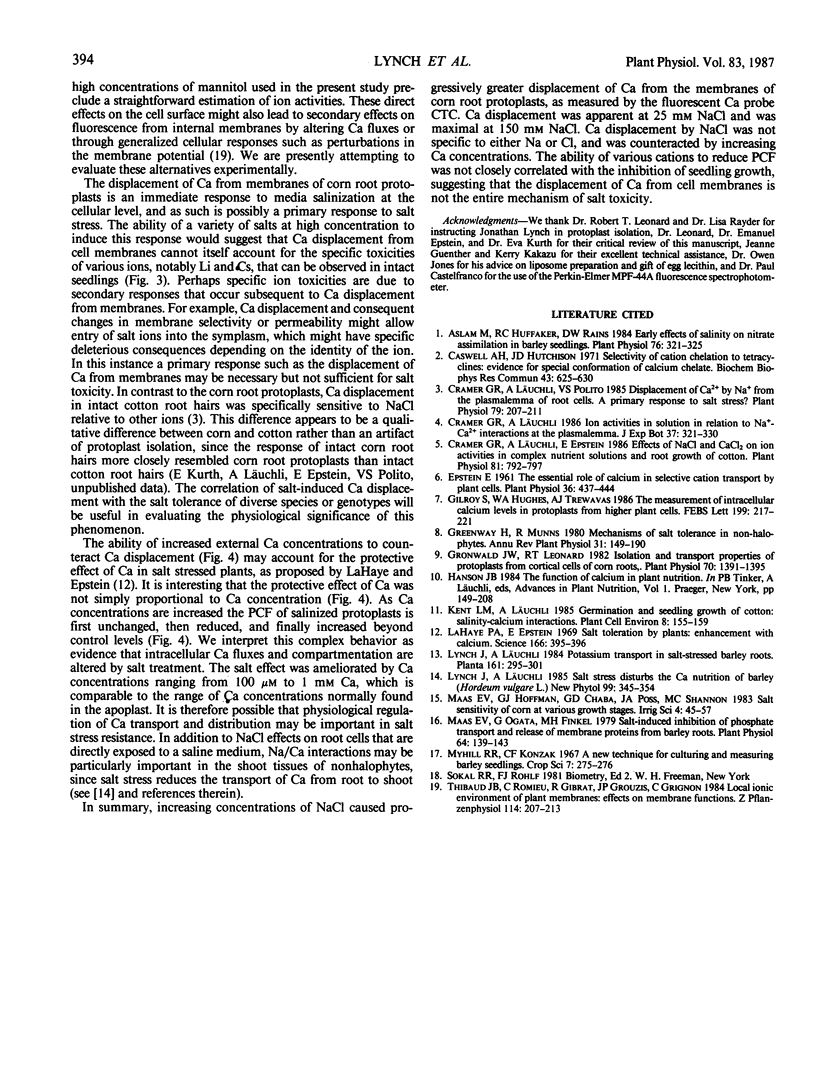
Selected References
These references are in PubMed. This may not be the complete list of references from this article.
- Aslam M., Huffaker R. C., Rains D. W. Early effects of salinity on nitrate assimilation in barley seedlings. Plant Physiol. 1984 Oct;76(2):321–325. doi: 10.1104/pp.76.2.321. [DOI] [PMC free article] [PubMed] [Google Scholar]
- Caswell A. H., Hutchison J. D. Selectivity of cation chelation to tetracyclines: evidence for special conformation of calcium chelate. Biochem Biophys Res Commun. 1971 May 7;43(3):625–630. doi: 10.1016/0006-291x(71)90660-7. [DOI] [PubMed] [Google Scholar]
- Cramer G. R., Läuchli A., Epstein E. Effects of NaCl and CaCl(2) on Ion Activities in Complex Nutrient Solutions and Root Growth of Cotton. Plant Physiol. 1986 Jul;81(3):792–797. doi: 10.1104/pp.81.3.792. [DOI] [PMC free article] [PubMed] [Google Scholar]
- Cramer G. R., Läuchli A., Polito V. S. Displacement of ca by na from the plasmalemma of root cells : a primary response to salt stress? Plant Physiol. 1985 Sep;79(1):207–211. doi: 10.1104/pp.79.1.207. [DOI] [PMC free article] [PubMed] [Google Scholar]
- Epstein E. The essential role of calcium in selective cation transport by plant cells. Plant Physiol. 1961 Jul;36(4):437–444. doi: 10.1104/pp.36.4.437. [DOI] [PMC free article] [PubMed] [Google Scholar]
- Gronwald J. W., Leonard R. T. Isolation and transport properties of protoplasts from cortical cells of corn roots. Plant Physiol. 1982 Nov;70(5):1391–1395. doi: 10.1104/pp.70.5.1391. [DOI] [PMC free article] [PubMed] [Google Scholar]
- Lahaye P. A., Epstein E. Salt toleration by plants: enhancement with calcium. Science. 1969 Oct 17;166(3903):395–396. doi: 10.1126/science.166.3903.395. [DOI] [PubMed] [Google Scholar]
- Maas E. V., Ogata G., Finkel M. H. Salt-induced Inhibition of Phosphate Transport and Release of Membrane Proteins from Barley Roots. Plant Physiol. 1979 Jul;64(1):139–143. doi: 10.1104/pp.64.1.139. [DOI] [PMC free article] [PubMed] [Google Scholar]


